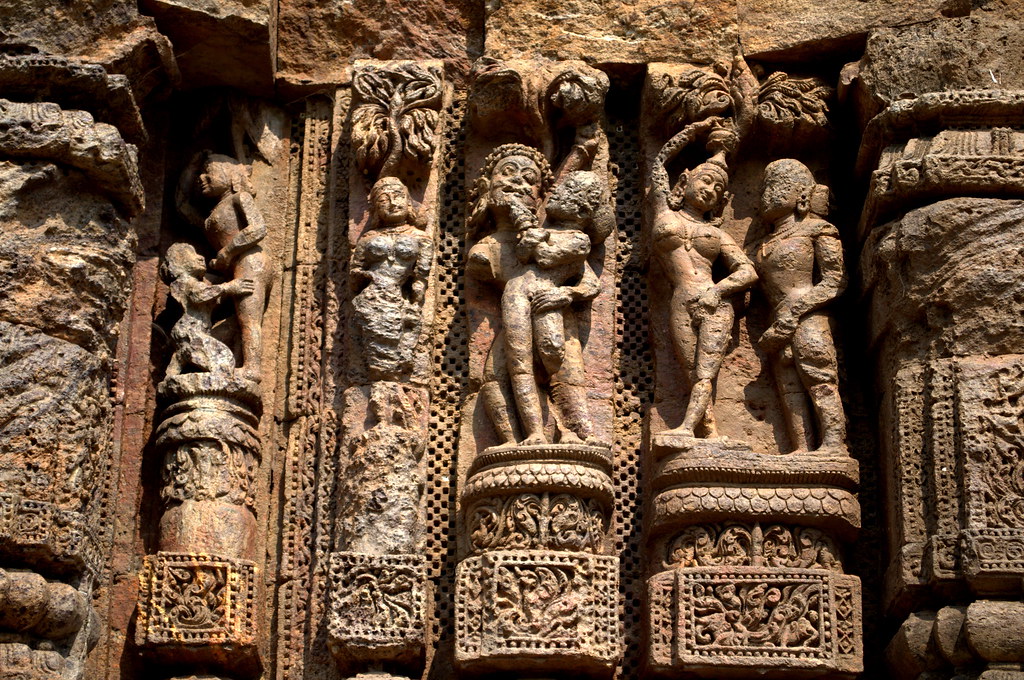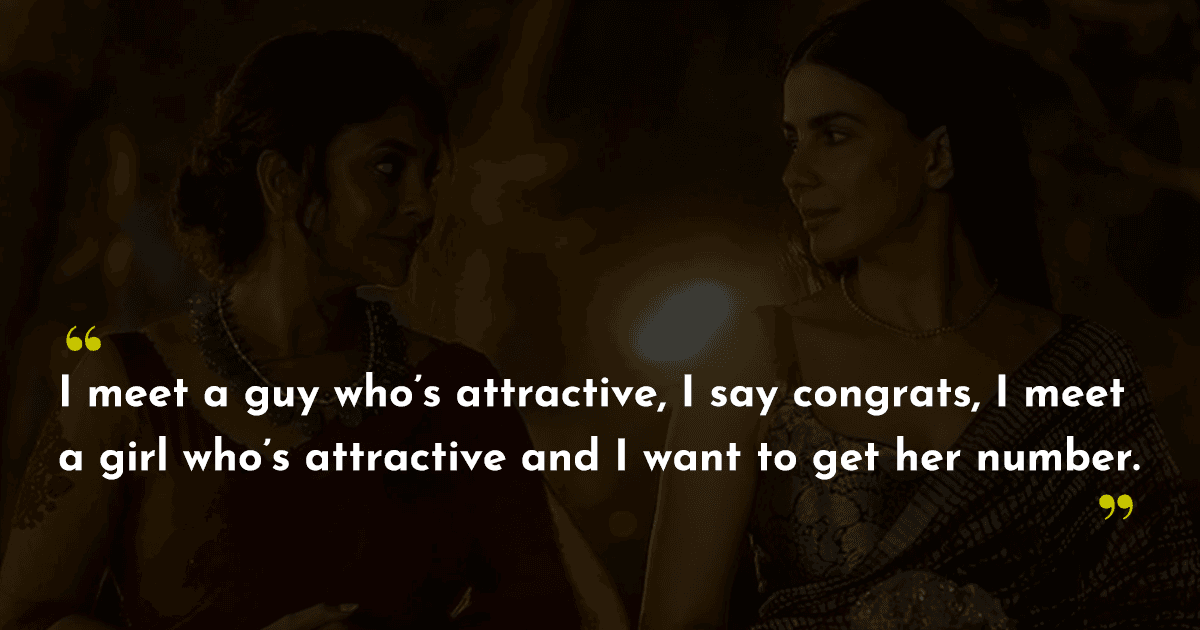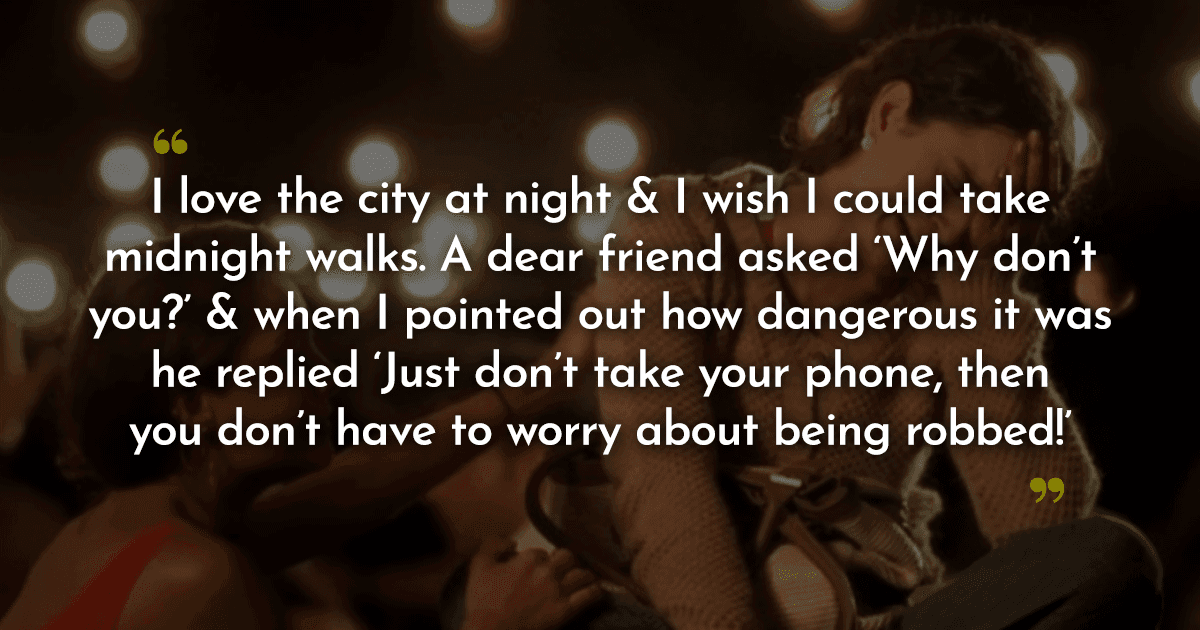Over five years ago, the Supreme Court of India took down the draconian Section 377 that criminalised same-sex relationships. It was a landmark judgment after decades of systemic oppression against people from the queer community. One would think, the decision proclaimed how we were evolving as a society, but that’s not completely true. In fact, we actually took an ancient stance because ‘queerness’ was ‘naturally’ integrated into ancient Indian artworks and architecture.

Throughout ancient Indian literature, there are depictions of non-heterosexual activities such as changing of sex, homosexual relationships, and characters of the third sex. One example is Shikhandi from the Mahabharata, who was born as Drupada’s daughter but later transformed into a man. Many devotees venerate the figure of Ardhanarishvara, a composite deity in Hinduism, representing Lord Shiva with his consort Parvati, depicted as half-male and half-female. When Vishnu incarnated as Mohini to enchant asuras into giving up the elixir of immortality, there’s a mention of his avatar’s union with Shiva resulting in the birth of Ayyappan, God of righteousness and celibacy.

Not just it, Kama Sutra, the ancient Indian text on sexuality and eroticism, recognises a variety of sexual practices, including homosexual relations. It acknowledges fluidity in sexual desires and the existence of a third gender, individuals who do not fall into the binary understanding of gender. In classic Tamil Sangam Literature, there are attributions to ‘Aravanis‘, a distinct social group of people who do not conform to the traditional genders, male and female. Even the Hindu Puranic literature recognises ambiguity in gender. It notes three kinds of deities associated with music and dance – Apsaras, Gandharvas, and Kinnars, mythical beings with the upper body of a human and the lower body of a horse, bird, or deer.

Furthermore, several monuments in India depict diverse sexualities and gender expressions. Look at Odisha’s Konark Sun Temple, or Khajuraho Temples in Madhya Pradesh, for example. Some of these intricate architectural carvings and sculptures depict various sexual acts and positions, which could be interpreted as a wide range of sexual acts and positions, including heterosexual, homosexual, or even group encounters.

When you move to medieval era, again, you find ample references that reiterate the existence of homosexual relations, even in royalty. In the Delhi Sultanate, Alauddin Khalji’s son Qutbuddin Mubarak Shah was known to have same-sex relations. In his autobiography, the Mughal emperor Babur wrote about how his 17-year-old self fell in love with a younger boy, Baburi, whom he met at a camp in Uzbekistan. Even the Islamic poetry of that era, from Bulleh Shah to Amir Khusro, is splurging with homoerotic references. Like, when Sufi saint Shah Hussain writes of his beloved Hindu boy Madhoo Lal or when Bulleh Shah blurs gender identities and writes of himself as Heer who has become Ranjha, having been consumed in love for him.
You see, queerness isn’t a modern invention; it’s been part of our culture for centuries, even if not always openly accepted. However, it was the British colonial rule in India that made things worse by imposing rigid ideas about gender and sexuality. Their views, largely influenced by Victorian-era norms and Christian moral values propagated social stigma and catalysed cultural suppression of people from the LGBTQ+ community. They introduced Section 377 in 1860, a law that criminalized same-sex relationships and evoked unjust punishments, enforcing their narrow views and creating a climate of fear and antagonism around people who did not confide in their binary perception of gender.
This legal barrier persisted until 71 years after the Independence when the Supreme Court of India, in 2018, finally overturned it, recognising the natural diversity of human love and identity that has always been part of our history. But this battle wasn’t fought in a day, and we’re still far from reaching a point where we can proudly proclaim our society is ‘inclusive’ in all sense. There have been several moments in modern Indian pride history where people paraded for their right to be.

A Pride March was organised in Kolkata in 1999. It was called ‘Friendship Walk’ where 15 brave participants from all around India gathered at Park Circus Maidan and made the historic walk in groups towards acceptance and inclusivity. Note this was when homosexual relationships in India were considered ‘criminal’ and hyper-connectivity did not exist the way it does today to amplify the voice of change and revolution. Therefore, through Yahoo messengers and telephones discussions were organised under secrecy. While the 1999 walk was among the first Pride Marches in India, calls for change had been raised years earlier.

In 1991, AIDS Bhedbhav Virodhi Andolan published a pink book titled ‘Less Than Gay: A Citizens’ Report on the Status of Homosexuality in India‘ which proved to be disruptive and one of the first ones to demand LGBT+ rights in India. Similarly, there were decades of small and big battles that were fought every day to end the 150-year-old draconian section.

But we have miles to uncover yet. A few years after the landmark judgment, the Supreme Court denied the right of gay marriages to be legally recognised. So while consensual queer relationships may not be criminal, they aren’t accepted. And not to forget the said and unsaid acts of intolerance hurled against people from the LGBTQIA+ community for merely existing every day. We have to unlearn years of prejudice and misleading narratives to co-exist with love, tolerance, and acceptance, as we should.

















